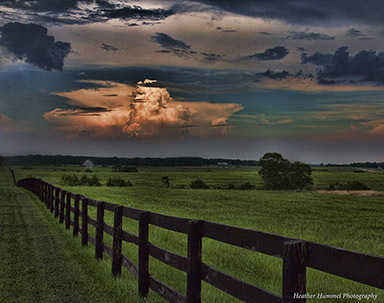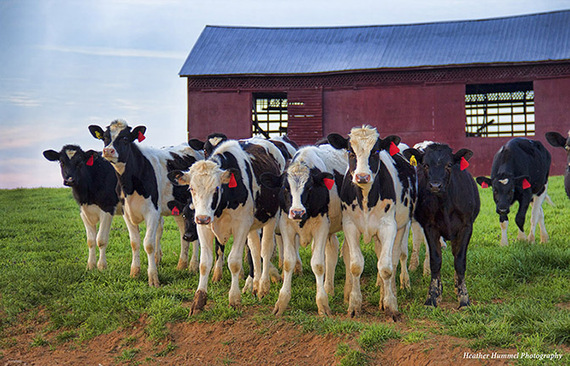
Photo Credit: © Heather Hummel Photography
Last spring when I discovered eight of my own images had been copyright infringed, I became particularly passionate about the legal rights of artists. I was fortunate that I had done a few things to help with protecting my work. One step was including a copyright statement, which is clearly stated, on my website. But, the most important step I took was not only registering my copyrights, but doing so in a timely manner. As such, several of my images that were stolen had already been registered with the U.S. Copyright Office upon infringement. I can attest that it was worth the few pennies per image to do so.
For example, the fee for me to register 184 photos for 2013 and 134 photos for 2014 was $55 per batch. That was done via an online registration form with the U.S. Copyright Office. Note that the limit per batch is 250 photos for $55 and batched by calendar year. The $110 to register several hundred photos was the best insurance policy I've ever bought. I will also add that the people I spoke to and e-mailed with from the U.S. Copyright Office were incredibly helpful and knowledgeable.
So,why does registering matter? Since I'm not an attorney, and in order to shed legal light on the topic, I reached out to copyright attorney Carolyn E. Wright, who specializes in protecting photographers via her law firm, found online at Photo Attorney. She is not only a photographer herself, but she is incredibly knowledgeable in the field and was willing to answer some questions on the topic.

CW: When a photo is not registered with the U.S. Copyright Office prior to the infringement, or within three months of the first publication of the photo, a copyright owner may recover only "actual damages" for the infringement (pursuant to 17 U.S.C. 504 (b)), instead of statutory damages. Courts usually calculate actual damages based on your normal license fees and/or industry standard licensing fees. You also may recover the profits the infringer made from the infringement if they aren't too speculative.
If your photo is timely registered for an infringement, you will be eligible for statutory damages of up to $150,000 for a willful infringing use. See 17 USC §504(b) and (c). You also may be able to recover some of your legal fees and court costs from the infringer. See 17 USC §505. Additionally, you need to have received your registration certificate to file a complaint for a copyright infringement lawsuit in most federal courts.
HH: With so many artists posting their work online, how important is it to use the © symbol, and what is the proper format?
CW: Including a copyright no¬tice is no longer required for copyright protection, but it is a good idea to use it. When the copyright notice is used, it may stop someone from stealing your art, either because it serves as a reminder that the work is protected or because the notice interferes with the use of the work. When you post a copyright notice along with your registered images, then the infringer cannot claim that the infringement was innocent (reducing the damages to as low as $200 per work) and a court is more likely to find that the infringement was willful, supporting the maximum in infringement damages.
The official copyright notice has three parts: the first part is the © (the letter "c" in a circle), the word "Copyright," or its abbreviation, "Copr." The second part notes the year when the work was first published. The third required part of a copyright notice is the name of the copyright owner. For example, the final format looks like this: © 2014 Carolyn E. Wright.

CW: Many people think that they have a right to use your photos or they won't be caught if they do. When you find an infringement, make copies of it. Once the infringer realizes that she is caught, she will do what she can to get rid of the evidence of the infringement. Check whether your copyright management information (such as your name, contact information, and copyright notice) is included in or has been removed from the infringing use.
Fortunately, there are many tools to battle copyright infringement. Three steps include:
1. Prepare a DMCA Take-Down Notice. Thanks to the U.S. Digital Millennium Copyright Act ("DMCA") enacted in 1998, the Internet Service Provider ("ISP") that hosts a website is not liable for infringement only if the ISP removes the infringing materials from a user's website after receiving proper notice of the violation. The notice must: be in writing, be signed by the copyright owner or the owner's agent, identify the copyrighted work claimed to be infringed (or list of infringements from the same site) and identify the material that is infringing the work. Additionally, the notice must include the complaining party's contact information, a statement that the complaint is made in "good faith," and a statement, under penalty of perjury, that the information contained in the notification is accurate and that the complainer has the right to proceed (because he is the copyright owner or agent).
2. Another option is to prepare a "cease and desist/demand letter yourself. When you don't want to alienate the infringer (the infringer is a potential client and/or appears to be an innocent infringer), you may want to contact the infringer to explain that the use is not authorized and either request payment of an appropriate license fee, a photo credit with a link to your website, or that the infringer cease use of the image. It's best to do this in writing--a letter by surface mail seems to have more clout than email correspondence.
3. The most aggressive option is to pursue legal remedies by filing suit. Unless there is a breach of contract or some other state claim, infringement claims are filed in a federal district court. To file suit, it is best to hire an attorney because the legal procedures are complicated. Note that you have three years from the date of infringement to sue for copyright infringement.

Photo Credit: © Heather Hummel Photography
Follow Heather Hummel on Twitter: www.twitter.com/HeatherHummel
This post originally appeared on the Huffington Post.

No comments:
Post a Comment